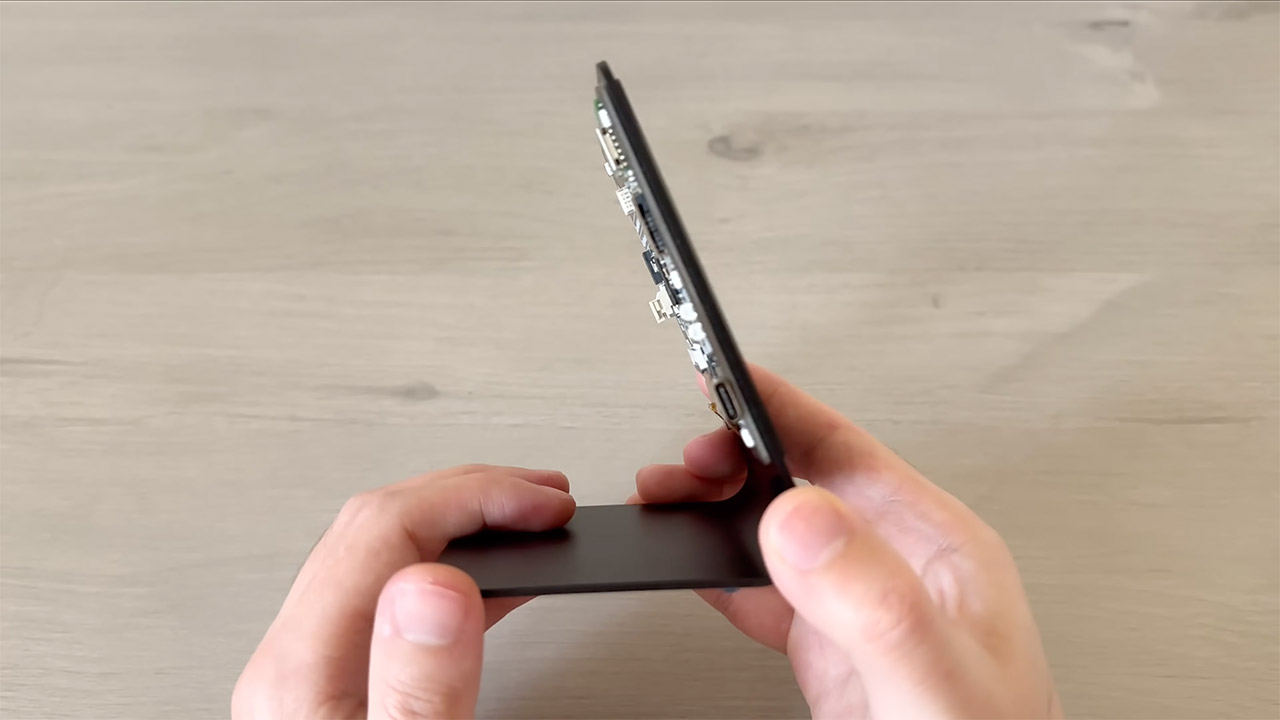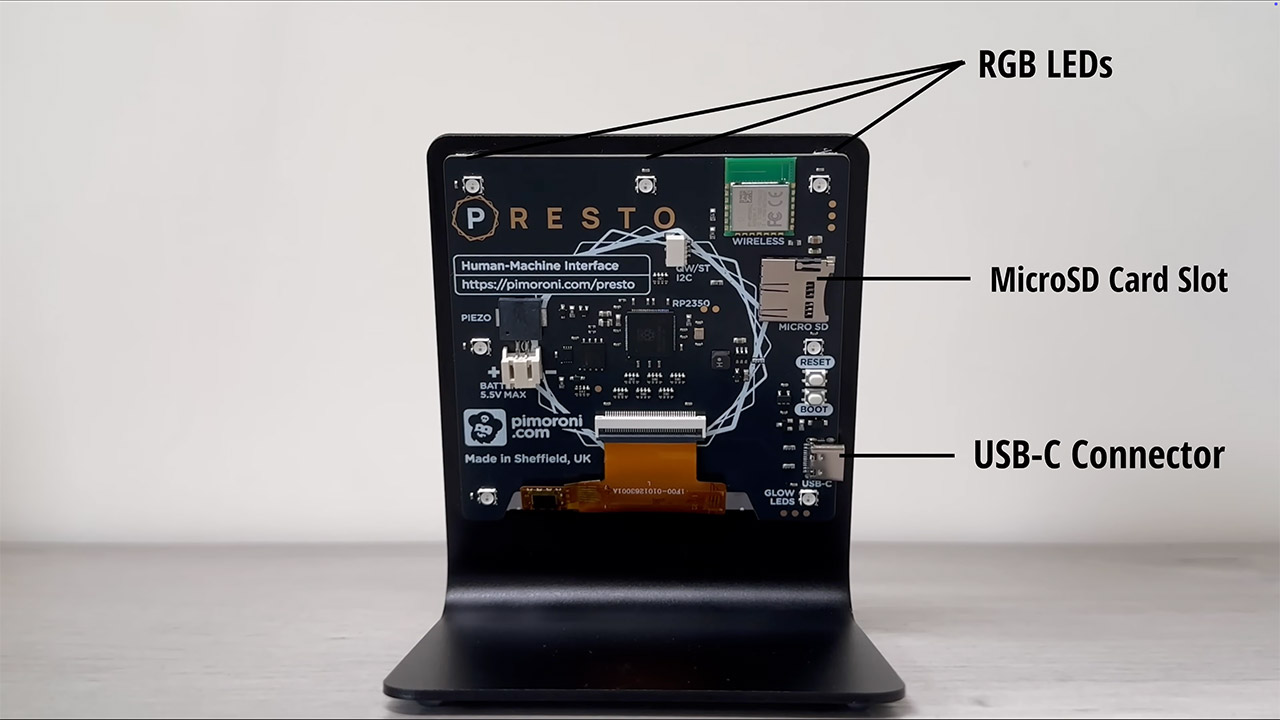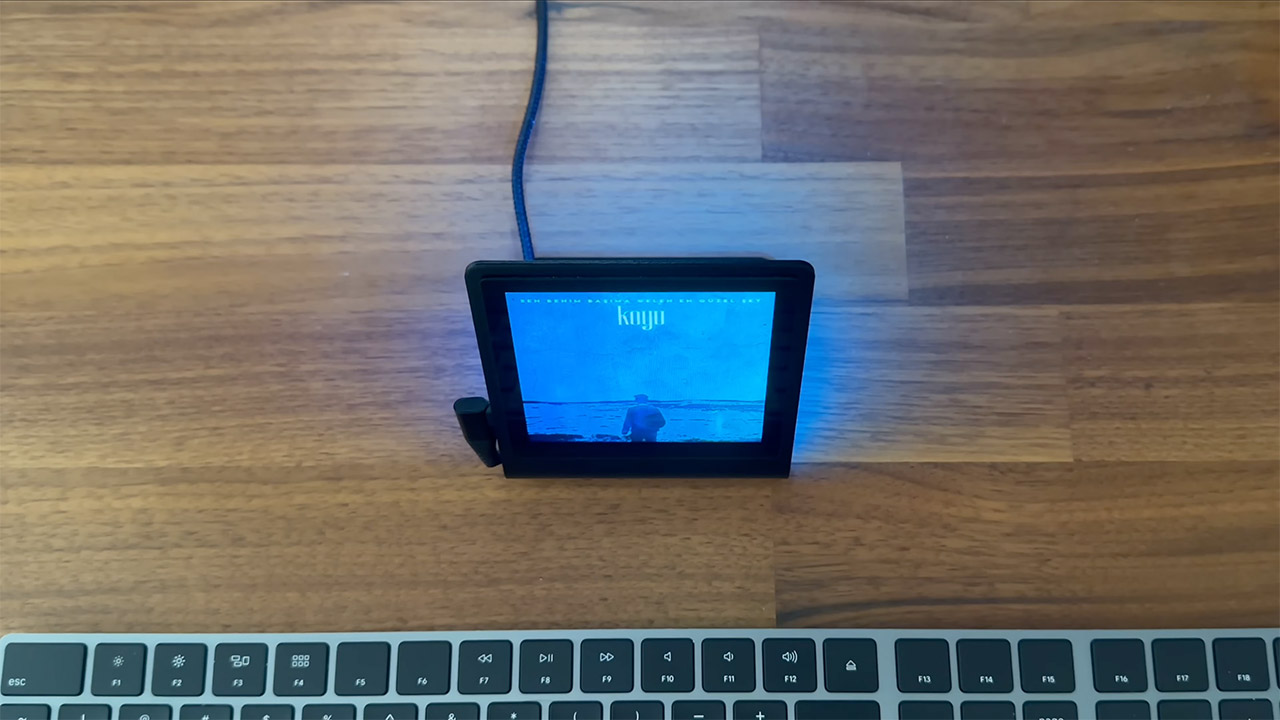
In a time when music streaming is stuck in complex smartphone apps, AKZ Dev’s PrestoDeck, a Spotify music player using the pre-built Pimoroni Presto, feels new and exciting. This small, touchscreen device puts Spotify’s huge music collection on your desk with a cool, retro-modern style, showing album art and playback controls. But is this homemade device worth its $100 price? Let’s see.
The PrestoDeck, made by AKZ Dev, turns the $100 Pimoroni Presto—a ready-to-use 4-inch, 480×480 touchscreen powered by a Raspberry Pi Pico 2—into a special Spotify player. It’s for music lovers who want an easy, hands-on way to play songs, with features like album art, play, pause, and skip buttons, and optional LEDs that change colors with the music. It’s a simple way to enjoy Spotify without a messy app.
No products found.

Its screen clearly shows Spotify’s album art, a big plus for a homemade project. The MicroPython interface is quick, making it easy to tap and control music. Optional MicroSD storage and ambient LEDs add flair—the LEDs pulse colors to match your music’s vibe, a gimmick that’s hard not to love.

Setting up the PrestoDeck is straightforward, especially since the Presto arrives pre-assembled. You’ll flash the Raspberry Pi Pico with MicroPython, configure Wi-Fi, and authenticate with Spotify’s API using AKZ Dev’s open-source code on Github. The process takes about 30 minutes for beginners, less if you’re a Raspberry Pi veteran. Once connected to a Spotify Premium account (required), it streams music seamlessly via USB-C power. A right-angle USB-C cable adds a tidy touch.

The PrestoDeck shines in playback. It pulls album art, song titles, and artist names in real-time, with intuitive controls that echo Spotify’s mobile app. Play, pause, skip, shuffle, and repeat work flawlessly, and streaming quality hits up to 320kbps for Premium users. The touchscreen, while not smartphone-smooth, is responsive enough for a DIY device. However, the Presto lacks a built-in speaker, so you’ll need headphones or external speakers to hear your tunes. Wi-Fi stability is crucial—any dropouts can interrupt playback—and the Raspberry Pi Pico’s modest hardware isn’t built for audiophile-grade sound.
[Source]








